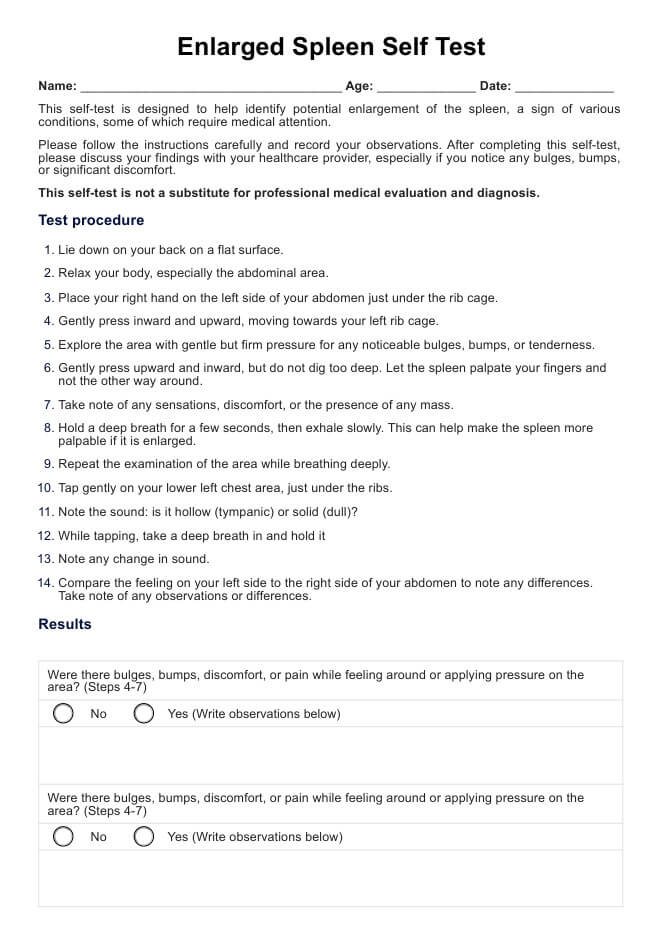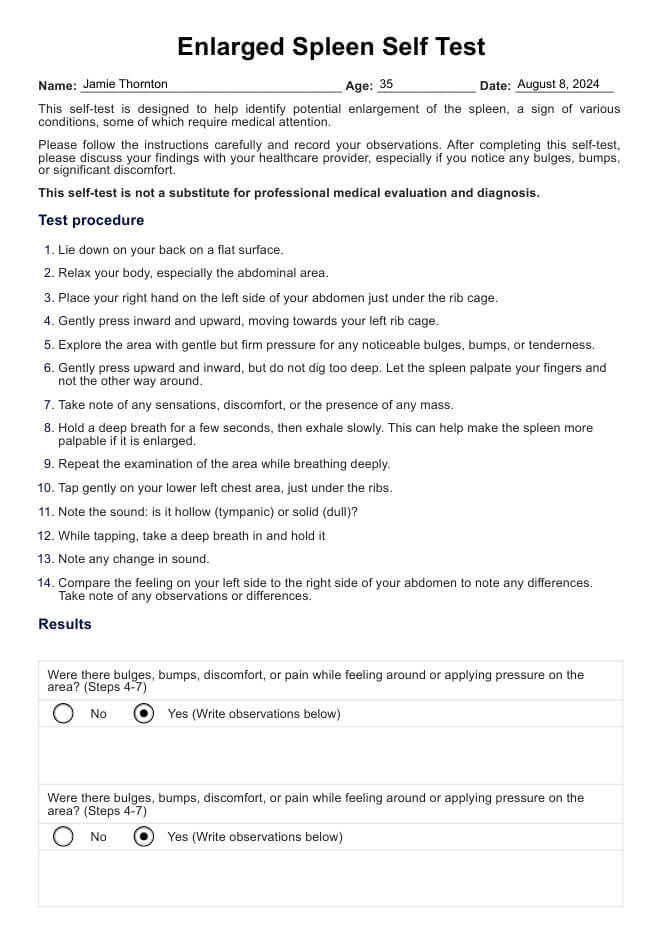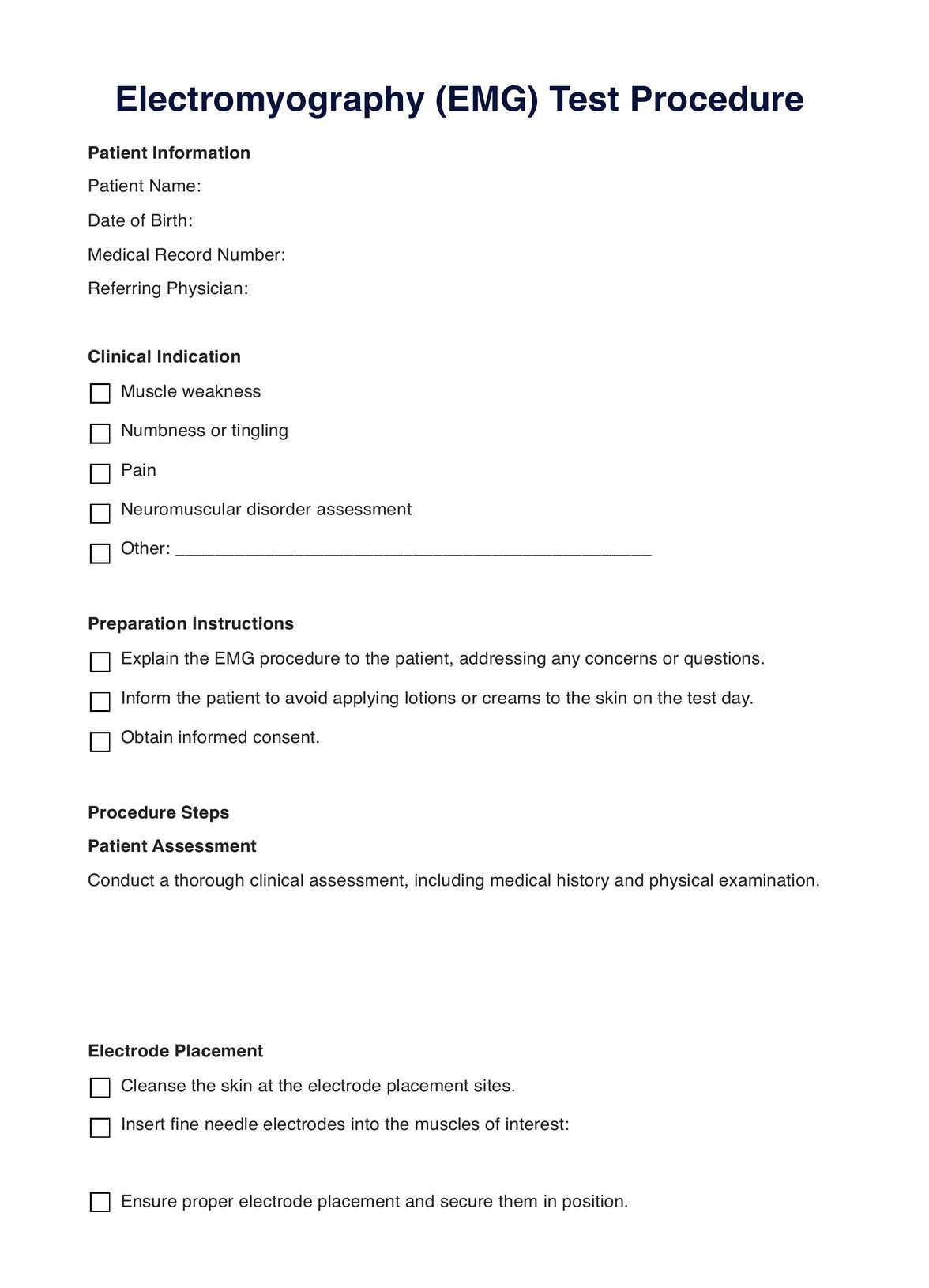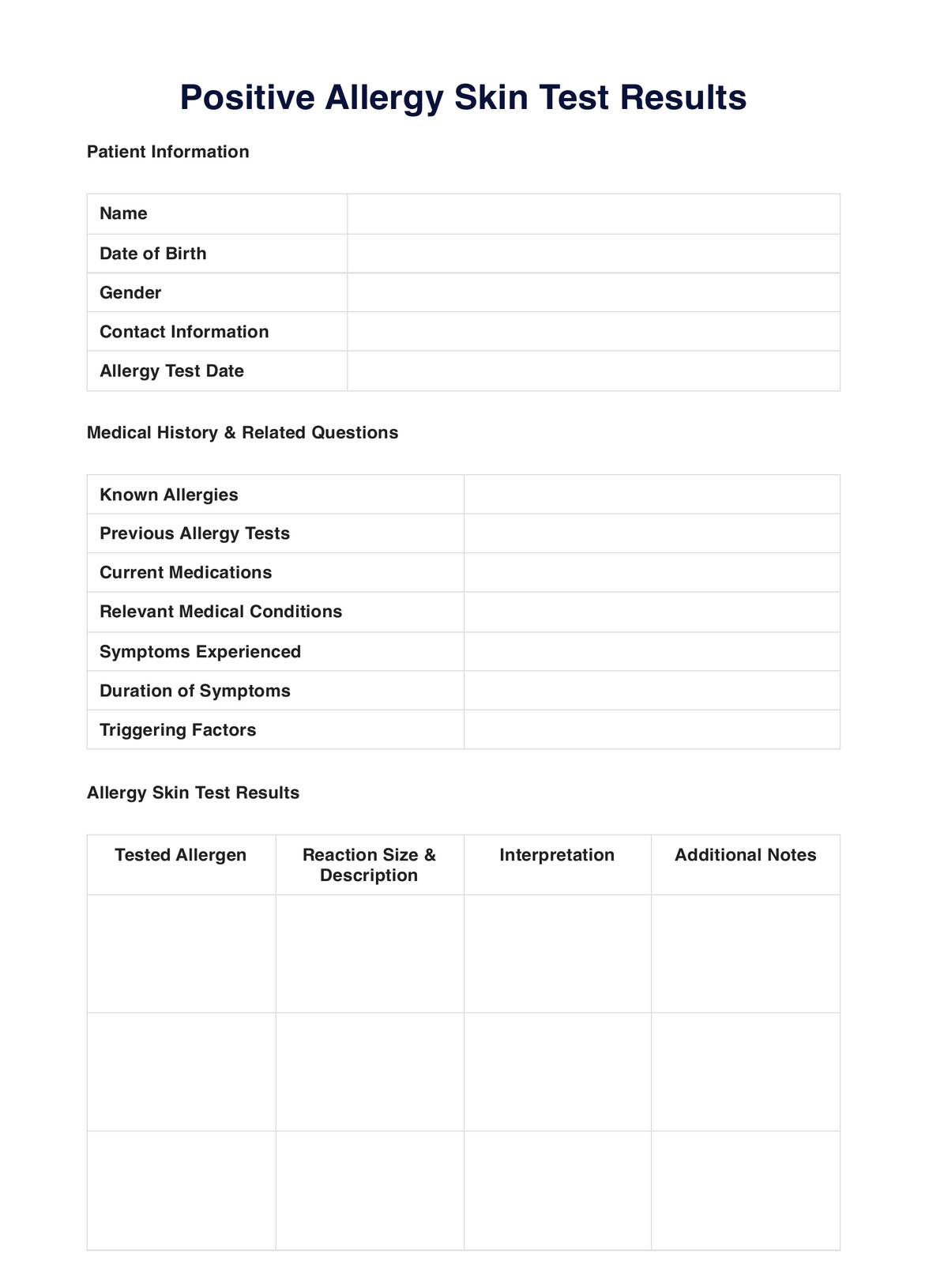Enlarged Spleen Self Test
Explore the Enlarged Spleen Self Test: a crucial tool for early detection and understanding of spleen health, enhancing patient self-awareness and care.


What causes an enlarged spleen?
An enlarged spleen, medically known as splenomegaly, can result from various factors affecting the organ's function. Understanding these causes is crucial for diagnosis and treatment. Here are some key contributors to splenic enlargement:
Viral infections
Viral infections like mononucleosis are common culprits behind splenic enlargement. These infections can cause the spleen to overwork in filtering abnormal red blood cells and producing white blood cells, leading to an increase in size.
Hemolytic anemia
Hemolytic anemia, a condition where red blood cells are destroyed faster than they can be produced, often results in splenomegaly. The spleen enlarges as it works harder to remove the damaged red blood cells from circulation.
Liver disease
Liver diseases, such as cirrhosis, can cause spleen blood flow problems. When liver function is compromised, blood may back up into the spleen, enlarging it and affecting its ability to filter blood effectively.
Frequent infections
Individuals who experience frequent infections may have an enlarged spleen. The spleen enlarges as it ramps up its production of white blood cells and antibodies to fight off these repeated infections.
Other factors
Other factors contributing to an enlarged spleen include certain cancers, such as leukemia and lymphomas, directly affecting the spleen's function and size. In some cases, pain may radiate to the left shoulder, known as Kehr's sign, indicative of splenic irritation.
Conditions that obstruct blood flow to the spleen or diseases that cause the spleen to store abnormal amounts of blood cells, like certain types of hemolytic anemia, can also contribute to splenomegaly. Additionally, metabolic disorders and some autoimmune diseases can lead to spleen enlargement, affecting its ability to filter and store blood cells efficiently.
Enlarged Spleen Self Test Template
Enlarged Spleen Self Test Example
What complications can an enlarged spleen lead to?
An enlarged spleen can result in various complications, some of which can significantly impact an individual's health. Understanding these potential issues is crucial to manage and prevent them effectively. Here are the primary complications associated with an enlarged spleen:
- Increased risk of infection: The spleen plays a key role in fighting infection and filtering parasites from the blood. An enlarged spleen may become overactive, leading to the premature destruction of too many blood cells, including white blood cells of the immune system, which can increase susceptibility to bacterial infections and parasitic infections.
- Risk of a ruptured spleen: An enlarged spleen is more susceptible to rupture, a potentially life-threatening emergency. Rupture can occur with minimal trauma and may result in internal bleeding.
- Anemia and reduced blood counts: As the spleen enlarges, it may trap and destroy healthy red blood cells and plates. This may lead to conditions like anemia (low red blood cell count) and thrombocytopenia (low platelet count). These conditions can cause fatigue, weakness, and increased bleeding risk.
- Pressure and discomfort: A significantly enlarged spleen can press against other organs, causing pain, fullness, and discomfort, particularly after eating, as the stomach cannot expand fully.
- Impaired liver function: In cases where the spleen enlargement is due to liver disease, further complications related to liver function can arise. This includes fluid accumulation in the abdomen and potentially life-threatening bleeding disorders.
Underlying issues that cause splenomaly may also increase the risk developing a blood clot disorder. Addressing the underlying causes of an enlarged spleen is crucial to prevent these complications. Regular monitoring and appropriate medical interventions are essential for individuals with splenomegaly.
How is an Enlarged Spleen Self Test conducted?
Conducting an Enlarged Spleen Self Test allows individuals to preliminarily assess the size of their spleen at home. While it's not a definitive diagnostic tool, it can provide valuable insights into one's health. Here's a step-by-step guide for this self-test:
- Lie down on your back on a flat surface.
- Relax your body, especially the abdominal area
- Place your right hand on the left side of your abdomen just under the rib cage.
- Gently press inward and upward, moving towards your left rib cage.
- With gentle but firm pressure, explore the area for any noticeable bulges, bumps, or tenderness.
- Gently press upward and inward, but do not dig too deep. Let the spleen palpate your fingers and not the other way around.
- Take note of any sensations, discomfort, or the presence of any mass.
- Take a deep breath and hold it for a few seconds, then exhale slowly. This can help make the spleen more palpable if it is enlarged.
- Repeat the examination of the area while breathing deeply.
- Tap gently on your lower left chest area, just under the ribs.
- Note the sound: is it hollow (tympanic) or solid (dull)?
- While tapping, take a deep breath in and hold it
- Note any change in sound.
- Compare the feeling on your left side to the right side of your abdomen to note any differences. Take note of any observations or differences.
How are the results of an Enlarged Spleen Self Test interpreted?
Our template includes a section for interpreting the results of an Enlarged Spleen Self Test. Here's an overview:
- Noticeable bulge: Detecting a bulge in the spleen can indicate possible splenomegaly. If a noticeable bulge is detected under the left rib cage, seeking a professional evaluation is essential, as it could be an early sign of an enlarged spleen. However, it's important to remember that other factors might cause such a bulge.
- Pain or discomfort: Pain or discomfort in the spleen area when pressing on the abdomen can signal underlying health issues and should be reported to a healthcare provider for further evaluation.
- Percussion sound quality: A hollow or tympanic sound is usually normal but requires professional advice if combined with other symptoms like a noticeable bulge or pain. A solid or dull sound may suggest splenomegaly, especially if the sound changes from hollow to solid when taking a deep breath.
- Deep breath variation: No change in sound generally indicates that splenomegaly is less likely. However, a change to a dull sound upon deep breath, known as a positive Splenic Percussion Sign, could indicate splenomegaly and warrants an evaluation by a healthcare professional.
Interpreting self-test results is a preliminary step and not a definitive diagnosis. Various factors can influence the results, making it essential to consult a healthcare professional for any concerns or abnormal findings. The template's guidance helps patients understand when and why to seek further medical advice.
What are other tests that can detect enlarged spleens?
While the Enlarged Spleen Self Test is a useful preliminary tool, it's important to complement it with other diagnostic tests for a more accurate assessment. Here are some standard tests used to detect splenomegaly:
Imaging tests
Imaging tests are a critical diagnostic tool in identifying an enlarged spleen. These include:
- Ultrasound: A non-invasive procedure that uses sound waves to create spleen images, helping assess its size and structure.
- Computed Tomography (CT) Scan: Offers detailed cross-sectional images of the spleen, providing more precise information about its size and any potential abnormalities.
- Magnetic Resonance Imaging (MRI): Utilizes magnetic fields and radio waves to produce detailed images of the spleen and surrounding organs. It's particularly useful in evaluating soft tissue and vascular structures.
Blood tests
Blood tests can help identify underlying conditions that might cause spleen enlargement. These tests can include:
- Complete blood count (CBC): Assesses the levels of red blood cells, white blood cells, and platelets, which can be affected by spleen function.
- Liver function tests: Since liver disease can be associated with an enlarged spleen, these tests can provide valuable insights into the overall health of the liver and spleen.
Physical examination
In addition to the self-test, a thorough physical examination by a healthcare professional can provide more insights. This examination might include palpation and percussion techniques a skilled practitioner performs to assess spleen size and tenderness.
Biopsy
In rare cases, a biopsy may be performed if there's a suspicion of a more serious condition affecting the spleen. This involves taking a small tissue sample from the spleen for laboratory analysis.
These tests, particularly imaging tests like ultrasound and CT scans, play a crucial role in confirming the presence of splenomegaly and understanding its underlying causes. They are essential in providing a comprehensive assessment of spleen health and guiding appropriate medical interventions.
Commonly asked questions
To check for an enlarged spleen, perform a self-test by palpating under the left rib cage, using percussion techniques, and observing for any discomfort, bulges, or changes in sound.
Reducing an enlarged spleen naturally involves addressing the underlying cause, such as managing infections or liver diseases, maintaining a healthy diet, and avoiding activities that strain the spleen.
The Middleton maneuver is a clinical technique for palpating the spleen, where the patient takes a deep breath while the doctor presses the left lower rib cage, checking for spleen enlargement.
An enlarged spleen often appears in advanced stages of liver disease, such as cirrhosis, indicating portal hypertension and the need for comprehensive medical evaluation and management.

















































































































